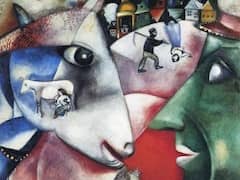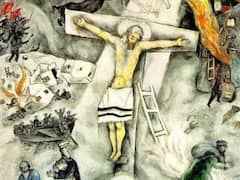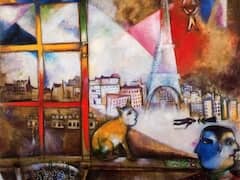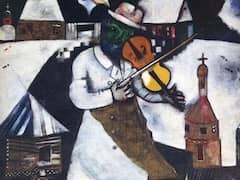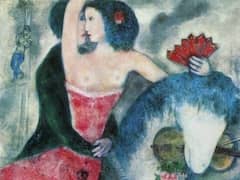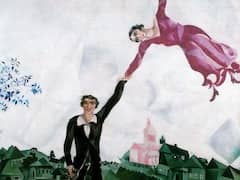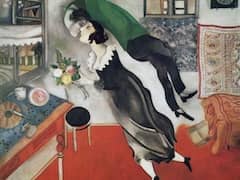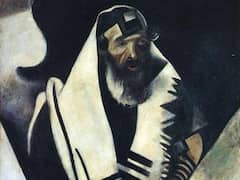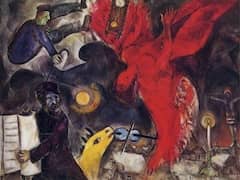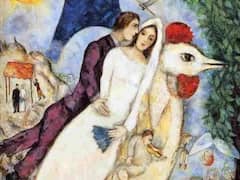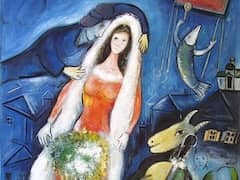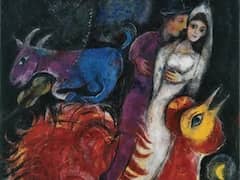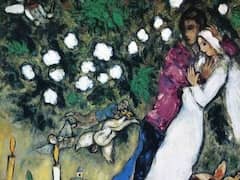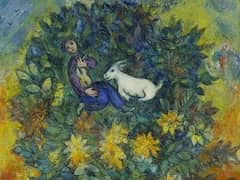Fruits and Flowers, 1929 by Marc Chagall
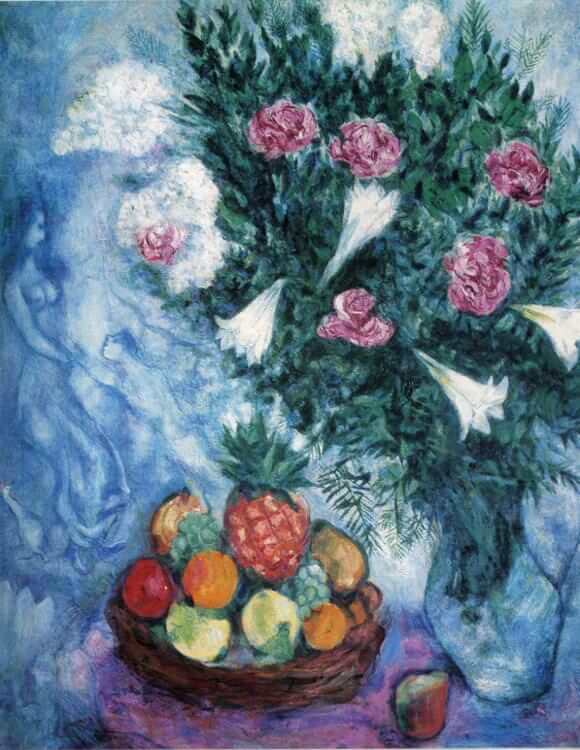
The encounter with the countryside of France, together with its intellectual and artistic influences, brought about a thorough change in Chagall's attitude toward color. The bold and vigorous palette, with perceptible undertones of Russian folklore, made way for more subtle coloring. This no longer stressed the dramatic contrasts brought about by the dialogue between pairs of complementary colors. Far more, it sought the crescendo and diminuendo of the lyrical color developments from a basic tone which can be effected by the modulations and gradations of neighboring colors in the color circle. The brighter color values form enlivening accents in the breathing modulation of the colored surface, which tends slightly toward the monochrome. This produces a flowing, floating light, not projected from any real light source - the sun or a lamp - but streaming forth from the light values of the actual skin of color. The result is a tender, dreamy, lyrical atmosphere for the expression of the theme and emotions of the picture. If we wish to find a comparison in the world of music, with which the painter himself would wholeheartedly agree, we must think of Mozart - who became Chagall's favorite composer.
The color in the picture is a development of a sequence from violet (the table) through blue-green (the flower piece) to blue (the ground). The point was to produce a general tone with all the derivations from that tone. The general tone is blue, which cools down to blue-green and warms up to violet. The ring of red-violet roses, the powdery white of lilacs and lilies, and the concentration of livelier color accents in the fruit basket, which is a slightly intensified repetition of the entire color display - all these are colored paraphrases on the basic motif. It was a matter of raising up a floating, limpid blue, which has no material existence whatever and is only present floating immaterially in the harmony of the modulated colors. In the end, this radiance of blue comes to illuminate the entire picture. The material color has been transformed into immaterial color-light.

